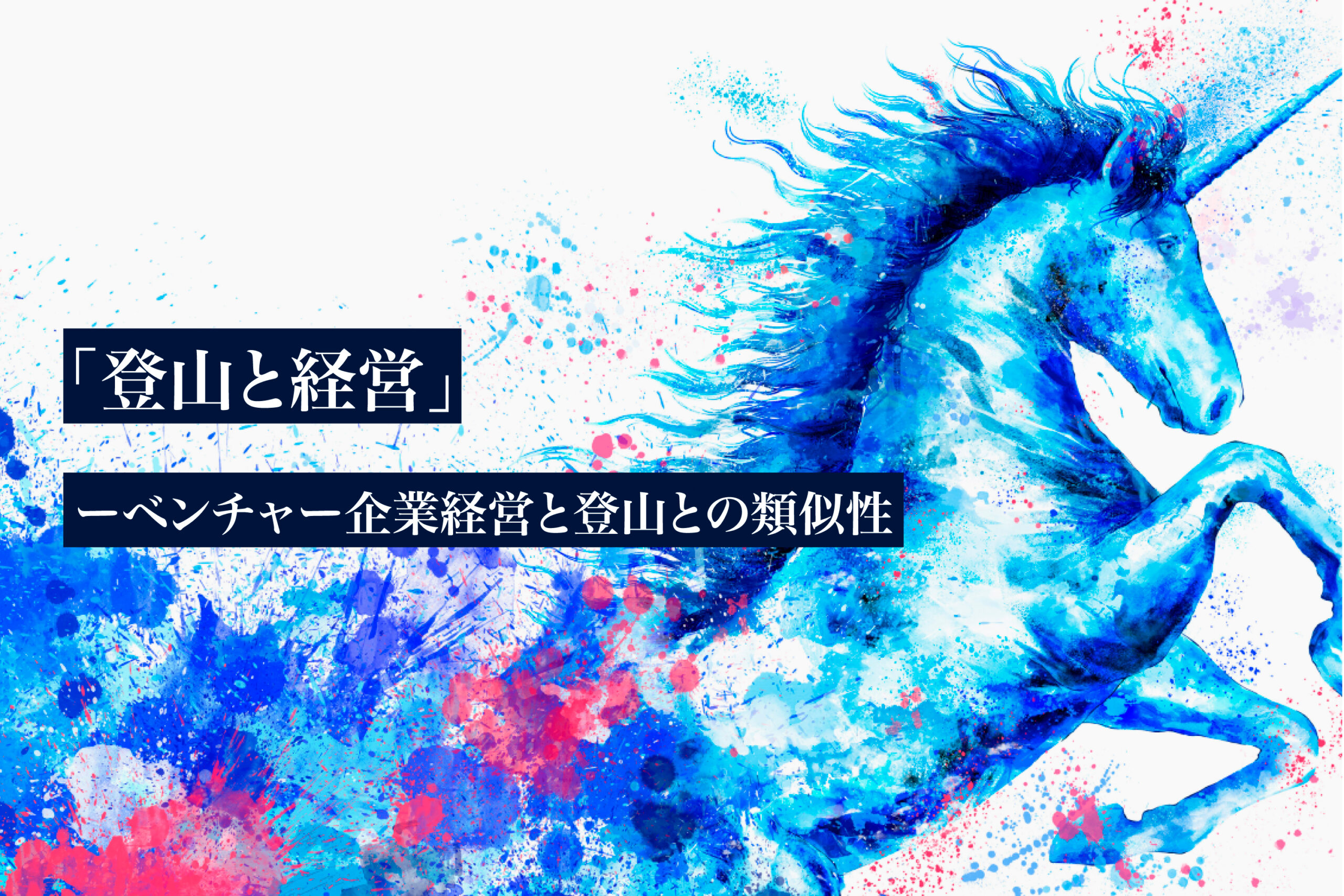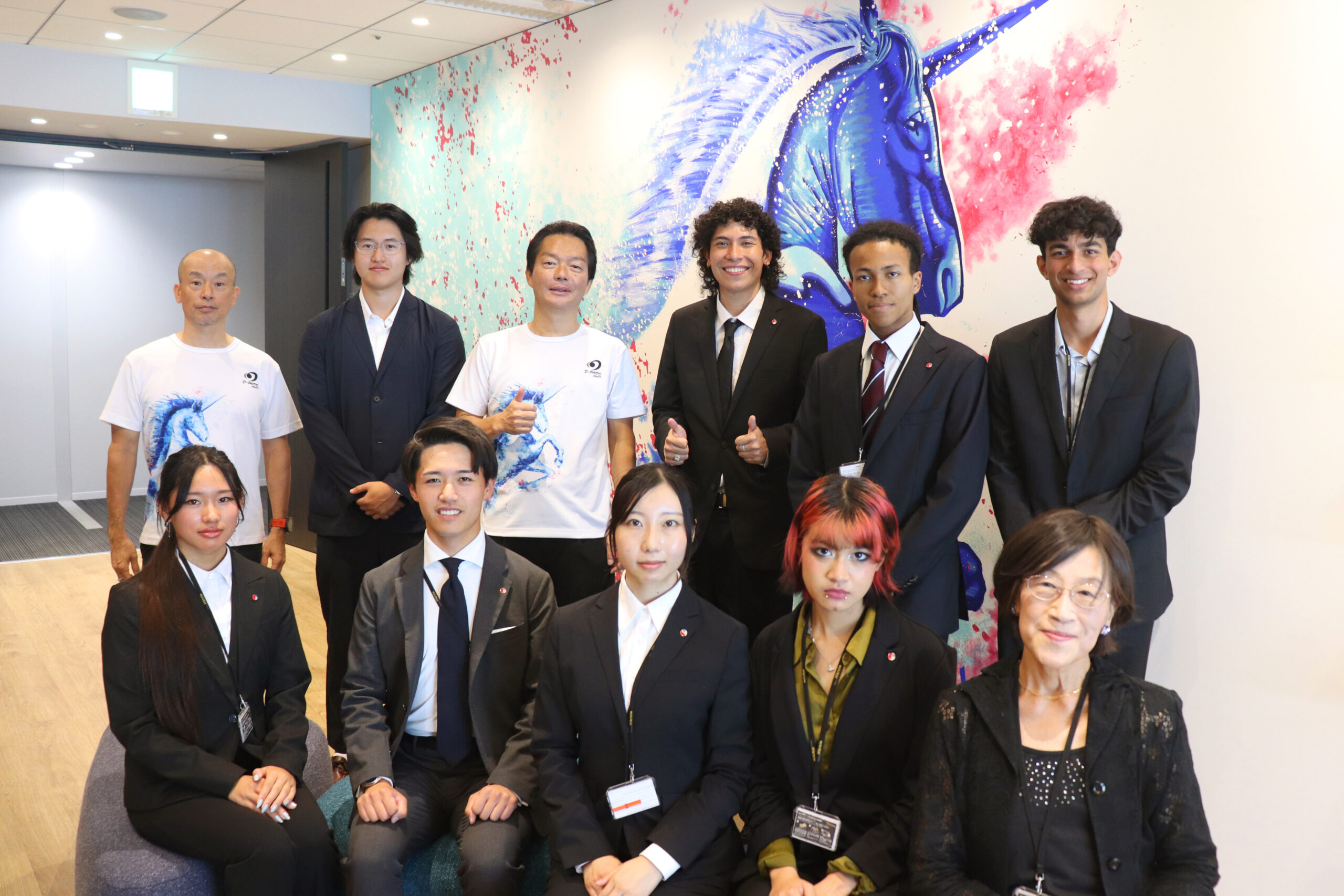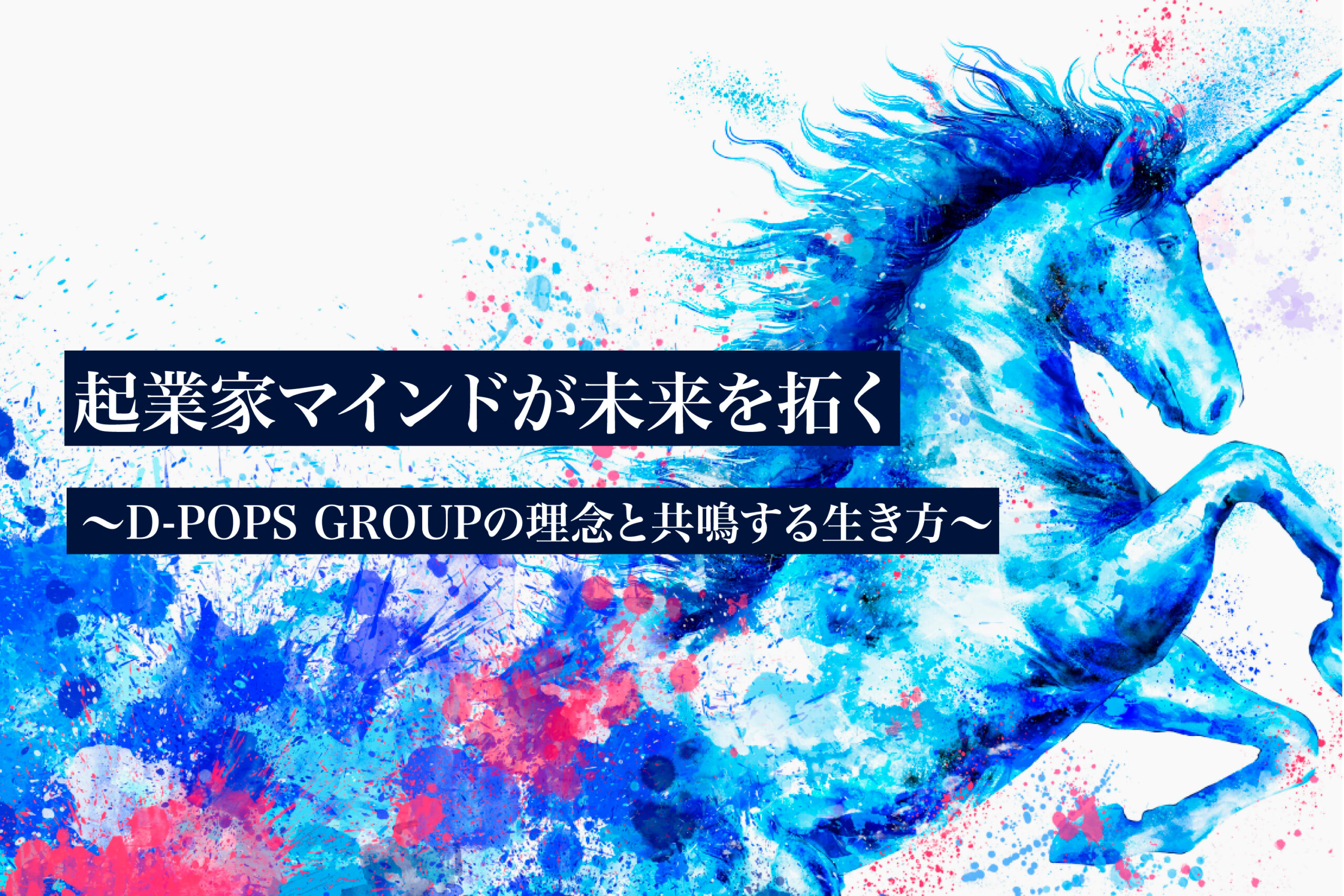
At D-POPS GROUP, we understand a “Venture Ecosystem” to be a dynamic platform that enhances the growth and sustainability of a community of enterprises. United by a shared identity and philosophy, these companies continuously innovate to address critical social challenges through groundbreaking business models. We are committed to making this ideal a reality through daily strategic efforts and unwavering dedication.
*For more details, please read “Venture Ecosystem: A Platform for Growth and Sustainability”.
As part of these dynamic efforts, we conduct Corporate Venture Capital (CVC) investment with our annually-generated profits to support other startup companies. Below is an expanded account of these activities.
1. Investment Criteria
Many companies engage in CVC investment activities, but generally, their contributions to the profits and success rates of their investments are small. However, D-POPS GROUP focuses not merely on pursuing profits, but on building Ecosystem partnerships. We establish basic policies and conduct activities based on ways in which our more than 20 group companies (more than 50 companies if you include investments) can improve and grow.
A. Business Domains
① “Real Business × Technology × Group Synergy”, and most important: “× People”
We look for companies that exhibit more than one of these four foundational elements. Our group’s origins in mobile phone retail shops, human resource businesses, and subsequent new expansion into solutions and technology businesses give us unique strengths in real-world economic activities—dealing with physical stores, property, and tangible assets. No matter how widespread AI becomes, a human’s hands-on touch will always be needed for final tuning. We believe human capabilities will become even more important in the future. AI is merely a tool to maximize human potential, and we want to support initiatives that empower people. Finally, we emphasize the utilization of technology as a foundation.
While not all elements need to be present, we first confirm how many of them exist or if there is extraordinary strength in any one area.
② Preferably focused on ICT/DX domains
If a business is related to information and communication technology or digital transformation, this makes for easier and more immediate knowledge sharing, collaboration within the group, and joint sales activities. This is not a make-or-break issue, but creating synergies with group companies is one of our foundational elements.
③ Addresses important social issues and has high market growth potential
Our group believes that “companies are public institutions of society” and does not conduct business solely for profit. Whether the startup truly addresses important social issues is a key consideration. Naturally, we also examine whether the market is growing and whether the target company has clear competitive advantages within that growth area.
B. Ideal Founder Profile
Diversity is important for Ecosystem growth. However, within that diversity, there are still certain personality traits that we think are necessary. D-POPS GROUP considers whether the founders and management of target investment companies fit the following profile as an important criterion for welcoming them as partners:
① Entrepreneurs with strong social contribution awareness and determination to transform society
② Those who embrace challenges with entrepreneurial spirit
③ Those who demonstrate sincerity, humility, gratitude, honesty, frugality, and tenacity
C. Stages and Models
We don’t have strong preferences regarding the fundraising stages or business models that typical VC funds clearly define. Instead, we provide broad support from seed to Series A, B, and later stages. Whether B2C or B2B, our group includes companies with various models, and our advisors have diverse experiences, allowing us to accompany startups according to their needs.
If we had to choose a preference, it would be subscription-based revenue models or platform-type business models. This is because we believe such models align with our culture of valuing people, prioritizing long-term customer relationships, and ensuring stable growth of the entire Ecosystem.
2. Investment Results for Fiscal Year 2024
D-POPS GROUP was already conducting CVC investment activities prior to 2024, but in that fiscal year, we established an investment committee and advanced our activities in accordance with our investment policies. This means that for all candidate companies, we follow a process where the investment committee deliberates, and only with unanimous agreement does it submit an application to the CEO. After conducting appropriate due diligence, only when all requirements are met do we enter into an investment agreement. As a result, in fiscal year 2024 (March 2024 to February 2025), we invested in the following eight startup companies:
① fluctlight inc. (https://fluctlight.ai/)
With the corporate philosophy of “solving Japan’s labor shortage by developing convenient AI-powered services to realize enriched lives for people”, this company is working on developing new services using generative AI technology.
② The Salons Japan Inc. (*Capital and Business Alliance) (https://www.thesalons.co/)
With the motto “True independence for beauticians”, this company develops and operates “THE SALONS”, a chain of private salon studios. This is truly a real-world business that supports people with specialized skills.
③ Adora Inc. (https://www.kodomamo.com/)
A startup developing and operating “Kodomamo”, an AI-powered parental control app. Their focus on protecting children while utilizing AI is well-aligned with our investment policy.
④ X-Locations Inc. (https://www.x-locations.com/)
This company aims to “combine, analyze, and visualize various location and spatial information in meaningful ways, making it accessible to everyone”. With many existing customers, they met our investment criteria.
⑤ Lezily Inc. (https://corp.lezily.com/)
Through “Japan’s first private mental training directed at moving beyond simply having ‘guts and perseverance’”, this company’s vision is to eliminate mental health issues in the world. We resonated with their dedication to valuing people.
⑥ BLUEISH Inc. (https://www.blueish.co.jp/)
With the philosophy of “Creating the future with AI and infinitely expanding business possibilities”, this company supports the efficiency of business processes. We decided to invest due to their executive leadership’s character and deep knowledge of AI.
⑦ Payke, Inc. (https://payke.co.jp/)
A company developing and operating “Payke”, a shopping support app for customers coming from overseas. This app is one of the most used by international visitors and represents a business that truly exemplifies the elements of real-world interaction and people.
⑧ WORKPORT, Inc. (https://www.workport.co.jp/)
With the mission of “Connecting people and companies to their desired future with limitless integrity and extreme rationality”, they are a recruitment and talent development company. We support their creation of a “reliable port of call for working people”.
For a more complete picture of our investment portfolio, please visit:
https://d-pops-group.co.jp/en/group/
https://d-pops-group.co.jp/en/press-release/
3. Post-Investment Support Activities
In our group’s CVC activities, we place special importance on supporting the business operations of the companies in which we invest. Below is just a short introduction of these support activities.
A. Trial Implementation at Group Companies
We have allowed test usage of services and products from Lezily, X-Locations, and BLUEISH at some of our group companies. This has enabled us to provide feedback on user experience and obtain hints for business development opportunities, preparing for future collaboration.
B. Collaboration with Group Companies
For Adora, we are introducing their contract services at all TOP1 mobile phone shops operated by D-POPS, while also negotiating nationwide distribution through carrier shops and electronics retailers’ smartphone stores with support from Advancer (another of our group companies). Additionally, we are working with BLUEISH and two other group companies to develop new business solutions.
C. Development of New Customers and Collaboration Partners
For almost all of our investment targets, we have introduced potential new customers and major companies that could become distribution partners. Thanks to our advisors’ extensive networks and companies within our Ecosystem tackling the same societal issues, these connection activities have progressed relatively smoothly.
D. Other Management Consulting
At first glance, The Salons Japan may appear to have no synergy with our other companies, but their private salon studios development and subleasing model is essentially a real estate business in disguise. Similarly, D-POPS’ expansion of mobile phone shop networks can also be considered a real estate business. Regular discussions between these executives have contributed to store development strategies that enhance brand power.
In this way, we are pouring our efforts into supporting companies that have newly joined our Ecosystem by providing what startup companies often lack: human resources, customer base, organizational strength, networks, and experience. In D-POPS GROUP’s CVC investment activities, we emphasize these support activities even more than financial backing.
4. Future Vision
As mentioned in our column article “Venture Ecosystem: A Platform for Growth and Sustainability”, D-POPS GROUP intentionally upholds collaboration, mutual learning, and assistance within the Ecosystem. As a concrete implementation of these values, we have recently started the following activities:
A. Business Introduction & Networking Events
We have begun organizing events where founders of newly invested startups give presentations about their businesses, followed by Q&A sessions and networking gatherings in the evening. The leaders of our group companies are all filled with entrepreneurial spirit, so they are greatly interested in the business models of thriving startups, stories of overcoming tremendous challenges, and the perspectives of uniquely talented entrepreneurs. These stories provide inspiration, and good questions lead to discovering seeds of new ideas for each other. After the formal event the participants move to a drinking establishment, where the presenters face nothing but more questions in what amounts to a second round of climactic interaction.
So far, we have had presentations from Mr. Tameto, CEO of BLUEISH, and Mr. Furuta, CEO of Payke. We hope to hold study sessions like these approximately once a month, inviting many of the companies within our Ecosystem to present and organizing them around certain topics.
Furthermore, as measures to help the entire Ecosystem grow and persist, regardless of investment ratio, we are considering adding the following activities in the future:
B. Exchange
We want to facilitate exchanges and information sharing between members of different companies who hold similar positions or roles (CxOs, engineers, marketers, etc.) to inspire each other. We aim to create systems that enable short-term secondments, temporary relocations, and even personnel transfers within the Ecosystem.
C. Mutual Aid
If there is a temporary shortage of personnel at Company A, such as during the launch of new routes or systems, personnel from Company B—which has sufficient staff at the time—can be sent to Company A to help them. In the same way, if Company B finds themselves in the same situation, Company C can send personnel to aid them, too.
D. Alumni Network
Eventually, within our group, there will likely be executives who successfully exit through IPOs or profitable business transfers. Other members may graduate from our group’s companies. However, if they continue to hold onto our group’s philosophies and personal values like integrity, humility, and gratitude, these alumni remain our friends and allies. They may participate as lecturers in our study sessions or serve as temporary substitute executives to rebuild underperforming companies.
Above, we have briefly introduced D-POPS GROUP’s investment policies and the group’s investment activities in FY2024. This is just one part of D-POPS GROUP’s efforts to realize a Venture Ecosystem.
We appreciate your continued support and encouragement.
Written by D-POPS GROUP Advisor Genta Sugihara






